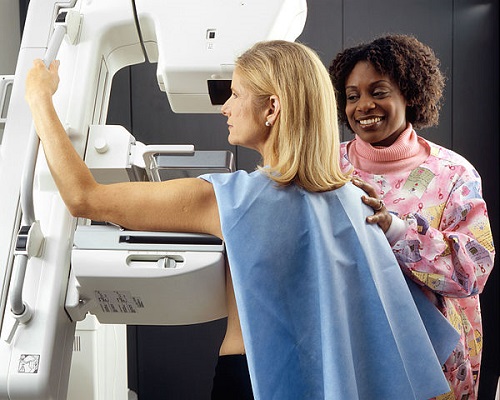The Difference Between a Mammogram and an Ultrasound
What is a Mammogram?
A mammogram is a specific type of x-ray picture that uses low dose x-rays on the breast. Mammograms are generally used to identify early signs of breast cancer, and are among the most successful methods in detecting early signs of breast cancer, often exploiting tumours that cannot be felt. When an individual receives a mammogram, they are required to stand in front of the x-ray machine, and their breast is placed on a clear plate, while another plate firmly presses the breast from above. Both plates will flatten the breast in order to hold it still, while the x-ray is taken. These steps are then repeated to obtain a side view of the breast.
What is an Ultrasound?
Ultrasounds, also referred to as sonograms, use high frequency sound waves to create an imagine of parts inside the body, such as kidneys, stomach, liver, heart, joints, or tendons. Ultrasounds use soundwaves instead of radiation, making them safer and more commonly used. Ultrasounds are also regularly used to check unborn foetus’ in the womb. Although ultrasound travels through soft tissue and fluid, sound waves bounce back when dense surfaces are detected. This is how ultrasounds are able to detect problems. For example, if an individual had healthy kidneys, the ultrasound would travel straight through. However, if an individual has kidney stones, ultrasounds will bounce back from them. That is, the denser the object is that an ultrasound hits, the more of it will bounce back. Ultrasounds are commonly used in modern medicine, and are used for both diagnosis and treatment purposes.
What is the Difference Between the Two?
The main difference between mammograms and ultrasounds are their usage. Mammograms are specifically designed to target the breast region, whereas ultrasounds can be used for almost all internal areas of the body. Furthermore, mammograms use radiation (albeit small amounts), where as ultrasounds utilise sound waves, meaning that patients are not exposed to potentially harmful radiation waves. Another important difference between mammograms and ultrasounds, is that mammograms provide an image of the entire breast, and often identify lumps that cannot be felt or externally seen. Contrastingly, ultrasounds are highly directed. That is, ultrasounds are extremely useful if a patient can feel a lump and the sonographer can place the camera directly over the suspected area. They are also useful if a mammogram has detected an unusual lesion, in which case an ultrasound can then hone in on that specific area. However, unlike mammograms, ultrasounds are not effective screening mechanisms, and rarely do they detect small lumps on their own.
- The Difference Between Philosophy and Psychology - August 21, 2016
- The Difference Between a Mammogram and an Ultrasound - August 5, 2016
- The Difference Between CBT and DBT - July 16, 2016
Search DifferenceBetween.net :
Leave a Response
References :
[0]Centre for Disease control and Prevention. (2012). MMWR weekly: Summary of notifiable diseases. Retrieved from http://www.cdc.gov/media/releases/2012/p0329_autism_disorder.html
[1]http://www.medicalnewstoday.com/articles/245491.php
[2]http://www.cancer.org/cancer/breastcancer/detailedguide/breast-cancer-diagnosis
[3]https://www.breastscreen.nsw.gov.au/about-mammograms
[4]https://commons.wikimedia.org/wiki/File:Woman_receives_mammogram_(3).jpg

